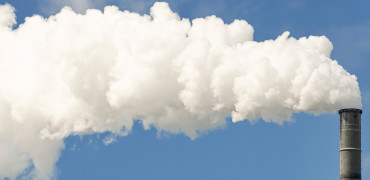2023 means that we're moving ever closer to several critical targets for the built environment.
And that means building owners have some important decisions to make.
MEES (Minimum Energy Efficiency Standards) is one pressing example. The government wants commercial properties to have a minimum EPC rating of B by 2030. Without the B rating, a property could not be leased or sold.
Even though the commercial property sector has been improving energy performance over the past decade, estimates are that around 60% of all non-domestic stock has an EPC of C or lower.
Packaging heat pump technology within a chiller provides the backbone of an energy efficient system
Stranded assets
In addition, upcoming regulations on carbon emissions in the built environment are making demolition and rebuilding less attractive to owners.
So, there’s an explosion of refurbishment activity, much of it prioritising energy efficiency and carbon reduction.
The last thing anyone wants is for their building to become a stranded asset that is both un-marketable and unattractive for tenants with robust ESG strategies.
The mission to future-proofing buildings requires fresh thinking on building services, which makes 2023 the ideal year to consider updating equipment, including older chillers.
Heat as well as cool
Over the past few years, we’ve heard a lot about heat pumps, as the government incentivises their use in buildings to replace fossil fuel technology such as gas boilers.
But heat pump technology can also be applied as part of other building services equipment, such as chillers.
The heat pump’s ability to transfer heat from one area to another can be harnessed to provide an energy-efficient heating and cooling solution for a broad range of buildings – from offices to data centres.
Unlike a traditional chiller, which uses a compressor to cool the air, a heat pump chiller uses a compressor to transfer heat from one area to another.
This allows it to provide both heating and cooling to a space, making it a highly efficient way to regulate the temperature in a building. Some heat pump chillers can also produce hot water for use in a building, further increasing their energy efficiency.
Reversible heat pumps
At Mitsubishi Electric, we have been involved in developing and applying many types of heat pumps – from our Ecodan domestic and commercial heat pumps; to the QAHV that produces hot water up to 90oC.
And our new MEHP chiller range takes that know-how to make heat pump chillers that offer benefits for every application – including comfort cooling or close control.
The Mitsubishi Electric MEHP reversible heat pumps operate effectively in heating or cooling mode - either drawing heat from the outside air and transferring it into the building or removing heat from the building and transferring it outside. This allows the heat pump to provide heating and cooling to a space, while using less energy than traditional heating and cooling systems.
MEHP can provide water up to 65oC, with an operating range as low as -20oC ambient. It also offers exceptional performance at part-load operating conditions, particularly useful in buildings where occupancy levels can fluctuate. And built-in intelligent control logic coordinates the non-simultaneous start of defrosting cycles in a group of heat pumps. This minimises the energy required for defrost while increasing the maximum heat output of the system during defrost.
Straightforward installation
One of Mitsubishi Electric’s goals is to support installers by ensuring that our equipment is straightforward to install and maintain. We know that in today’s busy facilities teams, there is less and less time to keep pace with the demands for service and maintenance.
With that in mind, the chillers have a plug-and-play option for factory-fitted pumps and buffer vessels. They are also designed to be fully accessible for servicing.
Heat pump technology provides an excellent solution as building owners come under increasing pressure to reduce their energy use and lower their carbon footprint. A building’s HVAC system is an excellent place to start for building owners considering refurbishing for energy efficiency.
Heating and cooling are significant energy users in buildings, and the ability to recycle ‘waste’ heat energy should be carefully considered by designers and installers – particularly when energy costs are spiralling. Packaging heat pump technology within a chiller provides the backbone of a heating and cooling system built on energy-efficient principles.
Dave Archer is National M&E Manager




